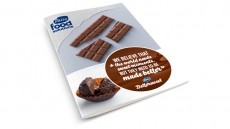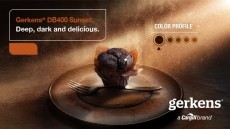丹尼斯科說,大豆冰正在成為主流
不耐症利基化並進入主流並發展成為一種
克服開發中一些常見問題的概念
這種產品。
盡管大豆冰已經上市有一段時間了,但冰淇淋部門經理芬恩·海特·克裏斯滕森告訴FoodNavigator.com,有兩個主要因素推動大豆冰進入主流超市。一是消費者對健康成分感興趣——大豆對健康有好處,比如降低低密度脂蛋白(LDL)“壞”膽固醇;另一個原因是,乳製品價格高企正鼓勵製造商尋找傳統乳製品冰淇淋的替代品,因為製作成本不高,因此利潤率更高。“大豆蛋白是一種更經濟的來源,”克裏斯騰森說。2007年11月,大豆分離物每公斤蛋白質的價格為5.50至6.50歐元,而脫脂奶粉每公斤蛋白質的價格為8至9歐元。根據這些價格——當然,價格會因各種因素而波動——製造商采用大豆路線可以節省15%至20%的蛋白質成本。為了幫助有興趣走這條路的製造商,丹尼斯科提出了香草大豆冰的概念。克裏斯滕森說,這是一項在風味、大豆分離蛋白和穩定劑體係上找到好的解決方案的實踐。他解釋說,開發這類產品的一個主要挑戰是,讓它們盡可能少吃大豆的味道,以滿足歐洲消費者的偏好(另一方麵,亞洲消費者更接受大豆的味道)。Danisco與Firmenich合作開發了一種掩蓋大豆風味的方法。這兩家公司在今年早些時候收購Danisco的香料業務後建立了合作關係。克裏斯滕森說,這個項目是新夥伴關係的一部分。另一個主要挑戰是口感,與傳統的冰淇淋相比,用大豆冰製作的冰淇淋往往更水潤。 To counter this, Danisco used its Cremodan 1101 LF IcePro, which is part of its range of emulsifiers and stabilisers for ice-cream. In addition to making for a suitable mouthfeel, this helps keep smoothness in throughout storage and distribution, too. Danisco also worked on the concept in cooperation with a soy protein/isolate manufacturer. The company is offering this basic concept to manufacturers, but can tailor make the package to suit specific needs. Several companies have already started targeting this sector. In 2007, for instance, Unilever launched soy ice products under its Carte D'Or brand in France; Ingman Glass launched Tofuline ice in Finland; Whole Foods Market in the US launched a soy ice under its 365 Everday value brand; Rollands launched a Sojasun product in France; and Spar made a product in Austria. In terms of how successful soy ices could be on the market, Christensen said it is difficult to say. But he added:“在豆製品飲料等其他食品類別中,我們看到了較高的增長率。我們可以推測,這在未來也會增長。”研究和戰略谘詢公司Prosoy對2006年歐洲無肉和豆腐產品市場的估值為12億歐元,比前一年增長5%。











